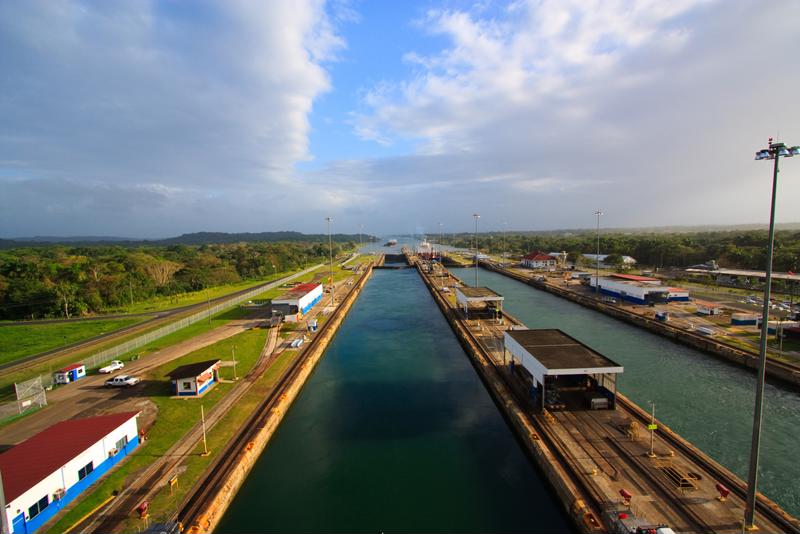Briefly, in late 2014, the Panama Canal ceded some of its control over the all-water shipping route between the Far East and the U.S. East Coast to the Suez Canal. However, the Central American waterway has since recaptured that traffic.
Both canals are in the midst of expansion projects meant to allow for more traffic and larger ships, and each job is nearing completion. With each waterway better prepared to handle modern day shipping volumes, the competition is on between the two of them to control water-based shipping routes.
"Weekly capacity the Panama Canal has jumped 20 percent year-over-year."
Panama Canal recaptures lost traffic
Alphaliner found that right now the Panama Canal accounts for 51 percent of the total capacity on the all-water trade, after falling to an all-time low of 44 percent in February, according to the Journal of Commerce (JOC). Still, even 51 percent is down from an all-time high of 74 percent in 2010. Weekly capacity on the Central American waterway has jumped 20 percent year-over-year to a record high of 143,000 20-foot-equivalent units (TEUs) in June. That volume accounts for 34 percent of total trans-Pacific capacity from the Far East, 4 percentage points higher than one year ago.
Though the Suez Canal is able to handle larger ships than its Central American counterpart, the Panamanian waterway holds many other advantages for shippers. An abundance of Panamax container ships, a shorter steaming distance and more affordable bunker fuel prices have made the waterway a more attractive option than the Suez Canal for many shippers.
Of the six strings launched between March and May, five use the Panama Canal. The Central American waterway has 16 services with a weekly capacity of 73,000 TEUs and an average ship size of 4,570 TEUs. Meanwhile, in Egypt, nine strings are routed through the Suez Canal. The services have a total capacity of 70,000 TEUs and an average ship size of 7,780 TEUs.
 Both the Panama and Suez canals are expanding, changes which could permanently alter global shipping routes.
Both the Panama and Suez canals are expanding, changes which could permanently alter global shipping routes. Suez and Panama Canal expansions nearing completion
The two expansion projects are set to have a profound effect on global shipping routes. As far as how the Suez expansion will change routes, not enough information has released to make a sound judgment on the potential changes.
"There isn't much by way of information to go on to make a judgment," Neil Davidson, senior analyst at Drewry, a maritime research consultancy, explained to the Financial Times. "We have to remain a bit skeptical until there is more evidence. The reduction of journey time makes the canal more attractive relatively speaking depending on the tolls charged. If you assume the tolls are the same or lower, this will increase attractiveness, but time is only one factor of a multitude influencing the outcome."
Meanwhile, the Panama Canal expansion will likely shift U.S. traffic from West Coast ports to those along the East Coast. Boston Consulting Group (BCG) found that by 2020 up to 10 percent of the container traffic moving from East Asia to the U.S. could shift from the West Coast to the East Coast. The alteration to the waterway is set to permanently change the competitive balance between the two coasts, BCG explained.
How the competitive balance between the Suez and Panama Canals will shake out following their respective completions, however, remains to be seen. With a lack of information coming out of Egypt regarding the region's dominant shipping waterway, time will tell whether the Panama Canal will hold onto its traffic crown, or if the Suez will take control of global shipping.